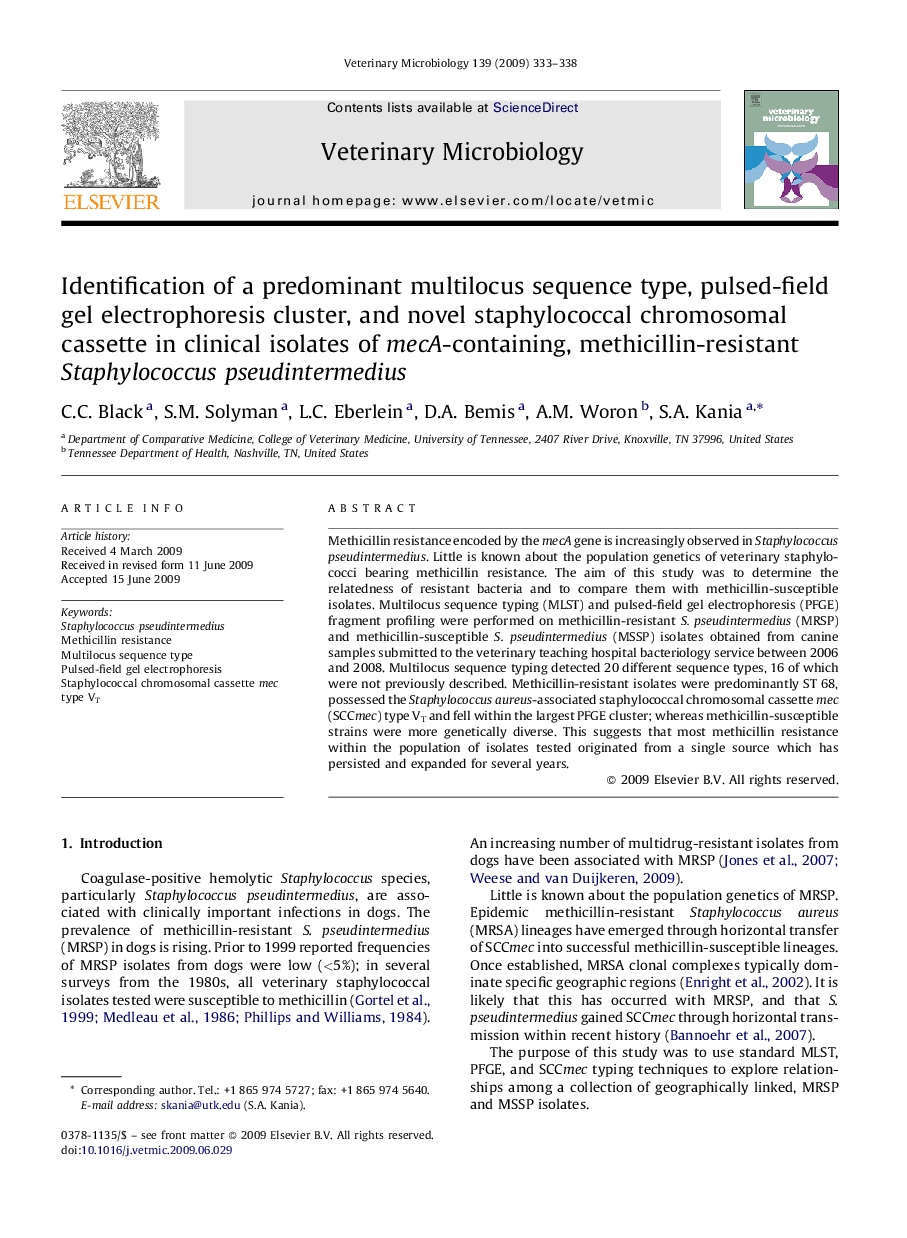| کد مقاله | کد نشریه | سال انتشار | مقاله انگلیسی | نسخه تمام متن |
|---|---|---|---|---|
| 5801895 | 1555420 | 2009 | 6 صفحه PDF | دانلود رایگان |

Methicillin resistance encoded by the mecA gene is increasingly observed in Staphylococcus pseudintermedius. Little is known about the population genetics of veterinary staphylococci bearing methicillin resistance. The aim of this study was to determine the relatedness of resistant bacteria and to compare them with methicillin-susceptible isolates. Multilocus sequence typing (MLST) and pulsed-field gel electrophoresis (PFGE) fragment profiling were performed on methicillin-resistant S. pseudintermedius (MRSP) and methicillin-susceptible S. pseudintermedius (MSSP) isolates obtained from canine samples submitted to the veterinary teaching hospital bacteriology service between 2006 and 2008. Multilocus sequence typing detected 20 different sequence types, 16 of which were not previously described. Methicillin-resistant isolates were predominantly ST 68, possessed the Staphylococcus aureus-associated staphylococcal chromosomal cassette mec (SCCmec) type VT and fell within the largest PFGE cluster; whereas methicillin-susceptible strains were more genetically diverse. This suggests that most methicillin resistance within the population of isolates tested originated from a single source which has persisted and expanded for several years.
Journal: Veterinary Microbiology - Volume 139, Issues 3â4, 18 November 2009, Pages 333-338